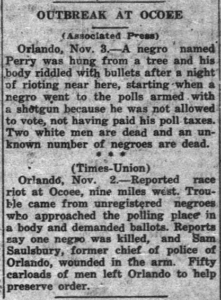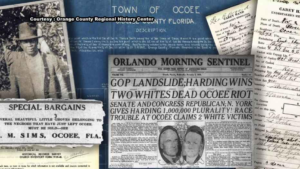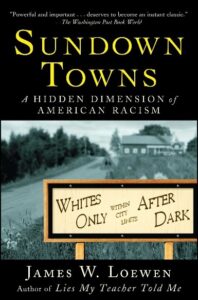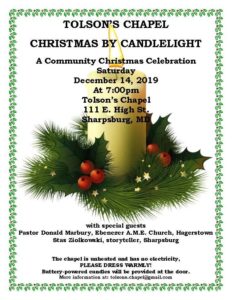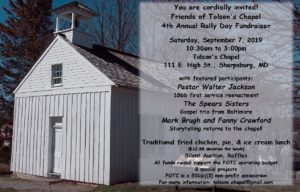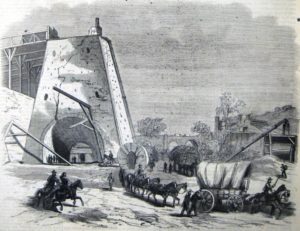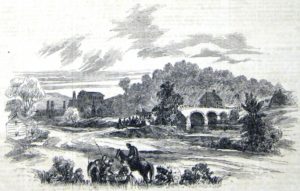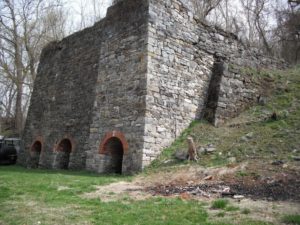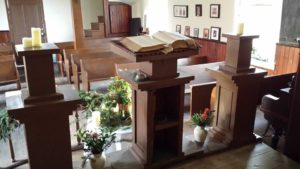Tolson’s Chapel and School became a National Historic Landmark this last week amongst so many other achieved milestones, long awaiting recognition. The building stands today as a beacon and touchstone of the rich past of African American history that can inspire all Americans to pursue those deep traditions of unity in family, community, faith, and education. This humble building also represents American unity, built from the ashes of the deadly and divisive American Civil War. The lesson we bring to life from the Tolson community is its “union with a purpose*” that guides us to fulfill our founding principles to form a “more perfect union” of earth dwellers and promote “life, liberty, and the pursuit of happiness.”
“It’s because being American is more than a pride we inherit.
It’s the past we step into and how we repair it.”
—*Amanda Gorman, Youth Poet Laureate, 2021 Presidential Inauguration
For over one hundred and fifty years the humble landmark of Tolson’s stands with a history more important than any war, won or lost. It stands for the diverse and aspiring communities in American history that produced the brilliance of imagination so long oppressed and deprived of expression and opportunity. We were treated to the product of that legacy of African American history in Ms. Gorman’s Inaugural Poem.
“That even as we grieved, we grew.
That even as we hurt, we hoped.
That even as we tired, we tried.
That we’ll forever be tied together, victorious.
Not because we will never again know defeat, but because we will never again sow division.”
—*Amanda Gorman, Youth Poet Laureate, 2021 Presidential Inauguration
Imagine the many souls of Tolson’s history if they could have lived long enough to witness this pivotal time, besides the thought of “why did it take so long?”
Imagine what Tolson’s Civil War veteran, Wilson Middleton, would have thought to see a black man become the Secretary of Defense, the highest-ranking military officer under the commander-in-chief?
Imagine the many African American women of Tolson’s and what they would have thought to see another strong woman of color win the Vice Presidency of the United States.
Imagine what a shy young student in Tolson’s American Union School would have thought about somebody like her becoming the first Youth Poet Laureate of the United States. Like Amanda Gorman, overcoming shyness, prejudice, and a speech impediment to inspire a nation about unity.
Imagine the possibilities of the American Reconstruction of the 1860’s realizing what the American Revolution was not able to realize a century before: our founding principles of life, liberty and the pursuit of happiness for all.
As a National Historic Landmark, Tolson’s Chapel and School becomes a gathering place for our whole community, inclusive of all walks of life to celebrate our common humanity. This landmark now becomes a community learning center for the nation to inspire the next generation to become what Dr. Martin Luther King, Jr. called our “beloved community.” By revisiting the past and learning from history, we can reimagine our present and create a new future together. A future better described by Ms. Gorman.
“And, yes, we are far from polished, far from pristine, but that doesn’t mean we are striving to form a union that is perfect.
We are striving to forge our union with purpose.
To compose a country committed to all cultures, colors, characters and conditions of man.”
With this lens of social justice, we can now see that “We the people” should mean “all the people.” American government, companies and organizations should “look like America,” diverse in its unity as well as diverse in its origins.
What do you think?
Let’s start a conversation about revisiting history to reimagine the present and our future.
Christopher Stapleton, Chair
Experiential Learning Committee
Tolson’s Chapel and School
Sharpsburg, MD
Amanda Gorman, Inaugural Poem 2021: https://www.theguardian.com/us-news/2021/jan/20/amanda-gorman-poem-biden-inauguration-transcript
